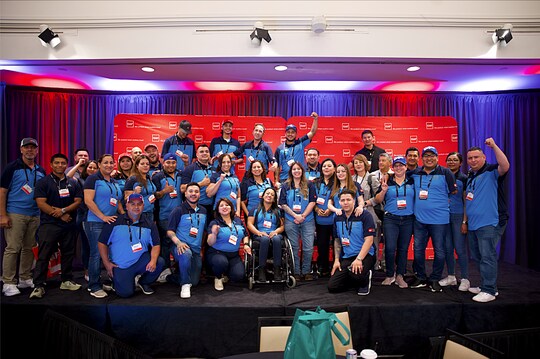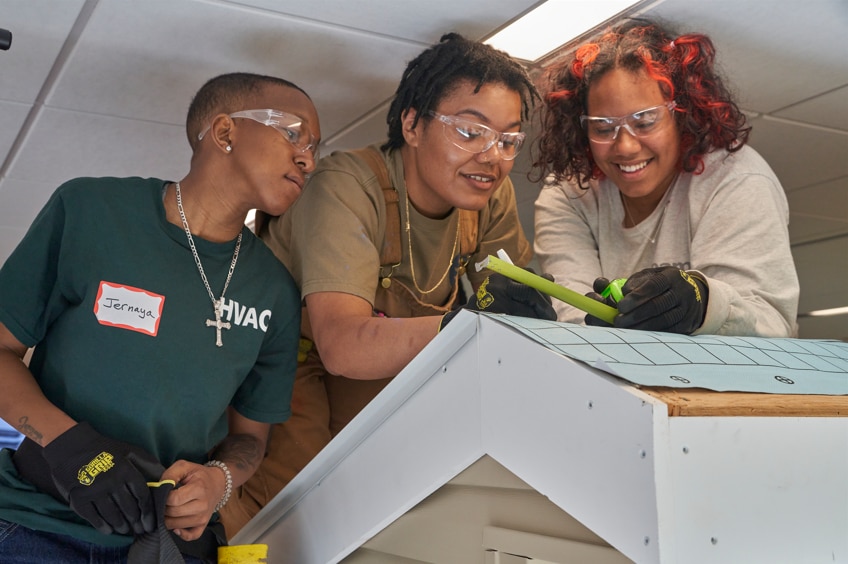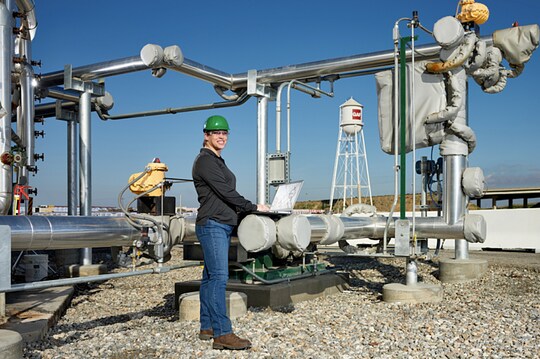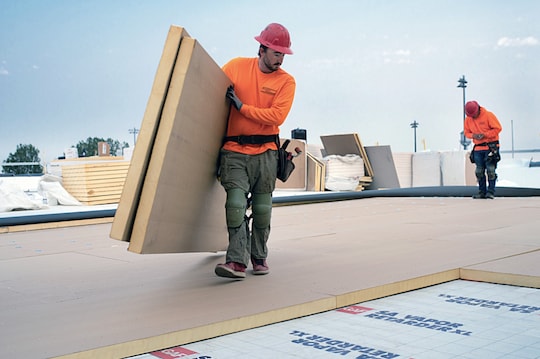
La industria de los techos comerciales y residenciales está en auge, ya que se espera una demanda de 19,000 nuevos trabajos para el año 2028. Accordingly, now is a great time to begin a career path in the sector by enrolling at the GAF Roofing Academy. Cientos de estudiantes consiguieron empleos para trabajar con techos luego de aprender las habilidades necesarias y obtener la experiencia que necesitaban.
One such graduate is Shakyra Worley, who notes the academy's tailored curriculum has benefited her life in several ways. We sat down with Shakyra to discuss how empowering it is to be a woman working in the male-dominated roofing industry, and how the new skills she's acquired will enable her to advance her career and maintain a stable and proud life.
Q&A with Shakyra Worley
Hi, Shakyra! Tell us a little about your background.
I'm from the Lower East Side of Manhattan, New York. I'm currently a student at Edison Job Corps, studying carpentry. I come from a house of three siblings, where I'm the baby of the family. My mom is a single parent, and she works for the Department of Health. She's a firm parent, but she's also very outgoing and protective.
What inspired you to enroll at the GAF Roofing Academy?
I was stuck doing 9-5 jobs and wasn't saving any money. And then one day, I had an epiphany: I needed more for myself! I wanted to get out of being stuck. So, I enrolled in the Edison Job Corps in New Jersey. I wanted to challenge myself to learn new skills and also enhance the ones I already have. What inspires me in roofing is working with my hands; that's very rare nowadays when things are mostly tech.
What are you most proud of, having completed your training?
I'm most proud of not giving up because, when I was younger, I was shy and always in the background. It felt good for me to get out of my comfort zone and I'm proud I did. Being a part of the carpentry/roofing trade helps me be more confident in what I'm doing and saying, as well as in facing my goals and challenges. This training will also give me the chance to teach and help others-that's a big part of me.
What did the GAF Roofing Academy mean to you?
Taking the course was meaningful because I was able to learn something that I can turn into a profession.
What was one of the most important things you learned at the GAF Roofing Academy?
I learned about the different aspects of a roofing system. Honestly, I didn't think it was as complex as it is!
What does the roofing trade mean to you?
Personally, learning the roofing trade is meaningful because I added another tool in my toolbox. I learned to put myself out there and to take a risk. Professionally, I think it's important to protect someone's home. Knowing how to protect someone's home means you can keep them safe, so where they live feels like an actual home.
What advice would you give to someone who wants to start a career in roofing?
This goes for really any profession, but do what you love. If you don't love what you're doing, you're going to be miserable.
With respect to the roofing industry, firstly, always be safe. You're working with heavy-duty materials, so you want to always make sure you're being as safe as possible. Secondly, put your heart into it. And thirdly, always know the value of teamwork. Always remember that communication and teamwork are keys to success.
How does it feel to be a woman working in a male-dominated industry?
Being a woman in a male-dominated industry means a lot to me. Women can do everything that a man can do! But, honestly, it can be frustrating at times as there's friendly competition—and through that competition, I'm up mostly against males. It's important to find the balance and remember things will work out. Everyone has a different skill set and different assets they can bring to the table; that is why teamwork is so important.
I had a female instructor, which was really inspirational. It was comforting to know that I could express myself without judgment, and it was inspiring to hear about the trials she faced throughout her career and how she overcame them.
Hear more from Shakyra about her experience with the GAF Roofing Academy and Edison Job Corps:
Building Your Career Path
If you're looking for a new line of work and are interested in pursuing a trade, roofing is worth considering. Explore the curriculum and opportunities offered through the GAF Roofing Academy, which combines classroom and on-the-roof training to help you build the skills needed for an entry-level position. The program also provides access to opportunities through the national network of thousands of independent, GAF-certified contractors. With numerous career paths and options available, now is the time to get involved.



